QuestionMark,
I have a Blandings turtle which is about 5 years old. Recently his shell has been peeling. His habitat is 50-50 water and land. He gets 12 hours of light per day UVB reptile sun/heat lamp. He eats fine I give him a varied diet of eartworms, crickets, waxworms, and various fruits/reptomin all of which. Any thoughts on why his shell is peeling.
Thanks
Todd
AnswerSeveral possibilies, after the basic disclaimer- I am not a veteranarian- this is based on my researh and experience. Take this as the opinion of a fellow hobbiest.
1. Water quality. Water that is significantly harder or softer than 'plain' water can cause problems for some species. I have not heard of any special sensitivieis for Blandings, but as you have probably found there is not as much info on this species as there is for many others.
2. Ulcerative Shell Disease (UCD or Shell Rot). This has many possible origins. Usually looks like dark splotches under the scales of the belly. The scute may peel away or fall off, leaving pitted bony surfaces underneath. It will spread to the back in time.
UCD is caused by some combinations of physical damage (rough basking/climbing surfaces) and the presence of shellfish- which carry a bacteria that eats through and lives in chitin- the stuff the scutes and shellfish shells are made of.
3. Too much UV. One error many keepers make is to not give the turtles a chance to escape the effects of UV. Your turtle only needs a couple hours a day on average and also needs the chance to get away from the sun when desired.
I'm betting on the lighting. My OPINION (and please take it only as such) is that you are overdoing the UV.
First- a 12 hour day is pretty long. In nature, Blandings only have 12 hours days a few weeks out of the year. I'd cut it back to better mimic the real world.
Second- what you describe could easily be a turtle version of sunburn. Dark shelled turtles are especially vulnerable to this.
My own lighting recipe is a bit more complicated, but works well with most species. I use a variety of timers and bulbs to achieve this effect:
1. Sunrise- a timer kicks on a flourescent bulb, relatively low wattage. Benefits: softer color and lower wattage mimics dawn.
2. A couple hours later, a incandescent bulb (or, for larger enclosures, a bank of bulbs) kicks on. Benefit: warmth, and combined with the flourescent light, offers a pretty balanced white light.
3. Noonish- kick on the UV bulbs. Benefits: warmth, vitamin D production, better sunlight match.
4. Early afternoon, the hottest time of the day- infrared basking light creating a hot spot or two in the basking areas. Benefits: heat and completes the sun's spectrum.
5. At about 4'ish, start turning things off in reverse order an hour or two apart to simulate sunset.
Not only does this system offer a pretty complete solar spectrum without expensive bulbs, it also offers better heat control and a failsafe in that if any bulbs burn out, others can do most of the work until yhou replace it.
I would back the UV off a few hours, offer some shade, check the water quality and make sure the belly scales look clean.
Good luck!

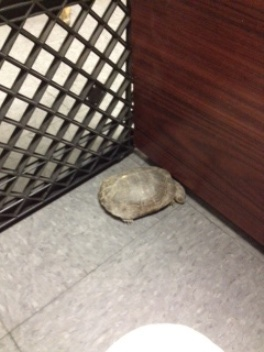 turtle id
Question
turtle id
hello, i would like to know w
turtle id
Question
turtle id
hello, i would like to know w
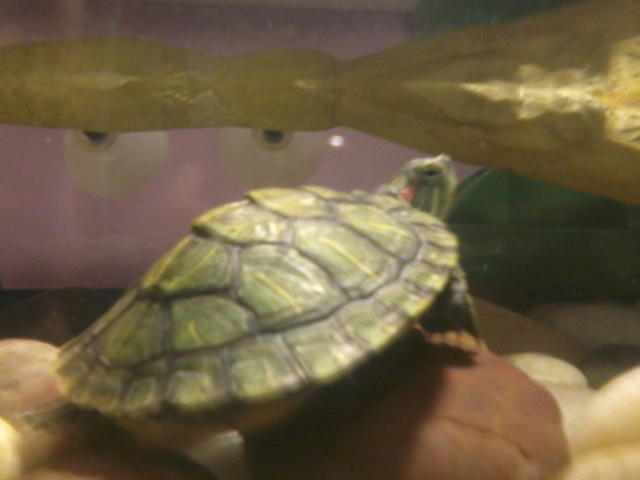 Pinkish worms in my red eared sliders stool
Question
My red eared slider
So just two days ago i saw
Pinkish worms in my red eared sliders stool
Question
My red eared slider
So just two days ago i saw
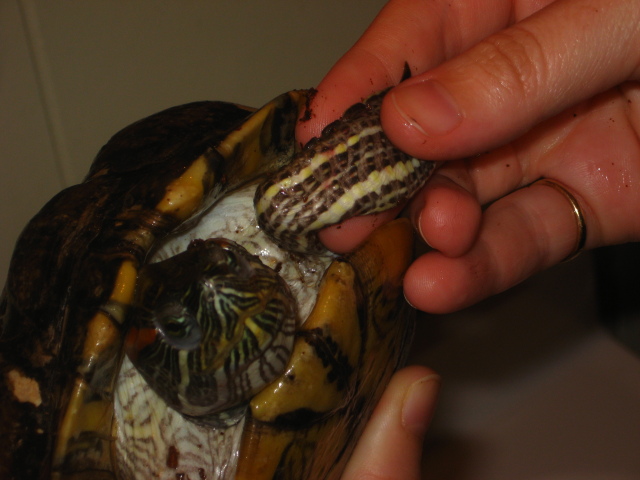 red eared slider shell rot
Question
turtles leg
We have a red eared slider, about
red eared slider shell rot
Question
turtles leg
We have a red eared slider, about
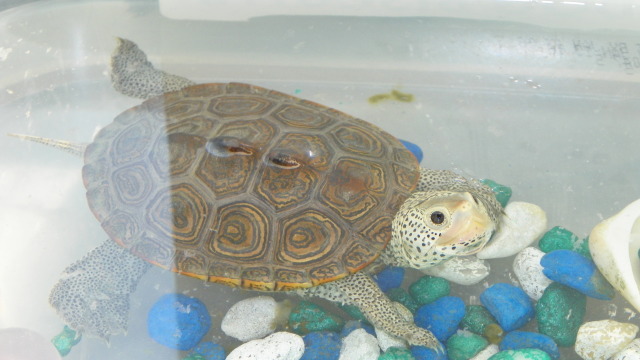 What species of turtle is this?
QuestionOur turtle
QUESTION: We found this littl
What species of turtle is this?
QuestionOur turtle
QUESTION: We found this littl
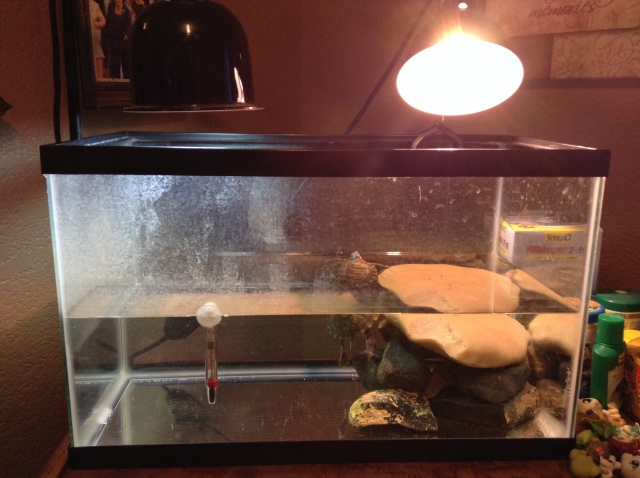 Red Eared slider in shock
QuestionQUESTION: I just cleaned my turtle cage today w
Red Eared slider in shock
QuestionQUESTION: I just cleaned my turtle cage today w